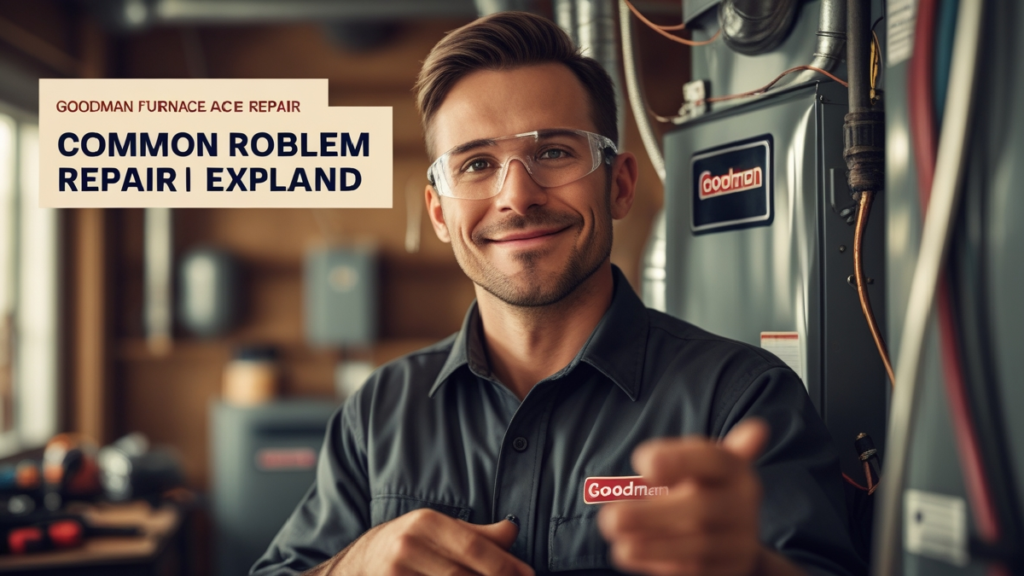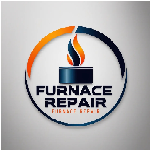Goodman Furnace Repair
Maintaining a comfortable home temperature during the colder months is essential for every homeowner, and a Goodman furnace plays a crucial role in ensuring warmth and comfort. Goodman Furnace Repair However, like any mechanical system, furnaces can encounter issues over time, leading to inefficiency or complete failure. Understanding common problems associated with Goodman furnaces, along with troubleshooting tips, maintenance routines, and repair options, can help homeowners save money and avoid unnecessary discomfort.

This comprehensive guide aims to provide a friendly, approachable overview of Goodman furnace repair, equipping you with the knowledge to identify issues early, perform basic maintenance, and know when to call in a professional for more complex repairs. Goodman Furnace Repair Proper furnace care not only extends the lifespan of your equipment but also ensures safety and energy efficiency, making it a worthwhile investment for any homeowner.
Understanding the Importance of Goodman Furnace Maintenance
Regular maintenance of your Goodman furnace is vital for several reasons. First, it ensures the system operates efficiently, reducing energy costs and preventing unexpected breakdowns. Second, routine checks and cleaning help identify potential issues before they escalate into costly repairs or safety hazards. Third, proper maintenance prolongs the lifespan of your furnace, saving you money in the long run. Lastly, a well-maintained furnace provides reliable heat during the coldest months, giving you peace of mind. Homeowners searching for “furnace maintenance near me” often overlook the importance of scheduled upkeep, but staying proactive can significantly improve your system’s performance and safety.
Troubleshooting: Common Issues with Goodman Furnaces
Identifying Typical Problems and Their Signs
Many homeowners encounter common issues with Goodman furnaces, which can often be diagnosed with simple troubleshooting. One of the first signs of a problem is inconsistent heating, where some rooms are colder than others, or the furnace cycles on and off frequently. Unusual noises, such as banging, rattling, or squealing, can indicate mechanical issues or loose components. If your furnace refuses to turn on or keeps shutting down, it may be related to electrical or safety features. Additionally, a sudden increase in energy bills can signal inefficiency or malfunction.
Understanding Error Codes and Malfunction Indicators
Modern Goodman furnaces are equipped with diagnostic systems that display error codes when a problem occurs. These codes are invaluable for troubleshooting, as they point directly to specific issues. For example, an error code like “E1” may indicate a flame sensing problem, while “E2” could signal a limit switch failure. Consulting your furnace’s user manual or online resources can help interpret these codes. Recognizing these signs early can save time and money, and prevent further damage to your system.
Common Problems in Goodman Furnaces
Some of the most frequent issues include a pilot light or electronic ignition failure, dirty filters, faulty thermostats, or blower motor problems. A dirty or clogged filter restricts airflow, causing the system to overheat or shut down. Ignition problems can prevent the furnace from producing heat altogether. Faulty thermostats may send incorrect signals, resulting in improper temperature regulation. Goodman Furnace Repair Mechanical issues, such as worn-out blower motors or broken belts, can also hinder proper operation. Recognizing these problems early allows for timely repairs, whether DIY or professional.
Maintenance & Safety: Routine Checks and Seasonal Preparation
Essential Furnace Maintenance Tasks for Homeowners
Regular maintenance is the cornerstone of efficient and safe furnace operation. Homeowners should start by inspecting and replacing air filters every one to three months, especially during peak usage seasons. Keeping the filters clean ensures proper airflow and reduces strain on the system. Additionally, checking the vents and registers for obstructions helps maintain good airflow throughout your home. It’s also important to examine the exterior of the furnace for dust, debris, or corrosion, and clean the area around the unit to prevent fire hazards.
Cleaning and Inspection Procedures Goodman Furnace Repair
Cleaning the furnace components involves turning off the power and removing access panels to inspect the blower assembly, burners, and heat exchanger. Gently vacuuming dust and debris from these parts can improve efficiency and safety. For gas furnaces, ensure the pilot light or electronic ignition system is functioning correctly. Goodman Furnace Repair Homeowners should also check for gas leaks or unusual odors, which require immediate professional attention. Regularly inspecting the condensate drain for blockages prevents water damage and mold growth.
Safety Precautions and Professional Assistance
While many maintenance tasks are manageable for DIY enthusiasts, safety should always come first. Always turn off power and gas supply before inspecting or cleaning internal components. If you are unsure about handling gas lines, electrical connections, or complex repairs, it’s best to call a qualified HVAC technician. Goodman Furnace Repair Emergency heater repair services are available for urgent issues, such as gas leaks or system failures during cold weather. Remember, attempting repairs beyond your skill level can be dangerous, and professional help ensures the job is done correctly and safely.
Seasonal Preparation Tips
Preparing your Goodman furnace for winter involves more than just routine maintenance. Before the cold sets in, schedule a professional inspection to identify potential problems. Ensure your thermostat is calibrated correctly and upgrade to a programmable model for better energy management. Clear the area around your furnace, removing any stored items or debris. Consider installing a carbon monoxide detector near the furnace to alert you in case of dangerous leaks. These proactive steps help ensure your system runs smoothly throughout the heating season.
Cost & Insurance: Understanding Repair Expenses and Coverage
Typical Costs for Goodman Furnace Repair and Parts Replacement
The cost of repairing a Goodman furnace varies depending on the nature and severity of the problem. Basic repairs, such as replacing filters or cleaning components, may cost less than $200. More complex issues, like replacing a blower motor or heat exchanger, can range from $500 to over $2,000. It’s essential to get a detailed estimate from a licensed technician before proceeding with repairs. Regular maintenance can help prevent costly breakdowns and extend the lifespan of your furnace, ultimately saving money over time.
Insurance and Warranty Considerations
Homeowners should review their home insurance policies to understand coverage related to furnace repairs. Some policies may cover certain repairs or replacements caused by accidental damage or natural disasters. Additionally, many Goodman furnaces come with manufacturer warranties that cover specific parts for a set period. Goodman Furnace Repair Extended warranties or service plans can provide peace of mind and reduce out-of-pocket expenses for future repairs. Always keep documentation of repairs and warranty information for reference.
When to Call a Professional
While basic troubleshooting and maintenance can be performed by homeowners, complex repairs should be handled by licensed HVAC technicians. If your furnace is emitting strange noises, producing insufficient heat, or displaying error codes you cannot interpret, it’s time to seek professional help. Goodman Furnace Repair Emergency heater repair services are available for urgent situations, especially during extreme cold weather. Remember, attempting to fix advanced issues without proper training can lead to safety hazards or further damage, so knowing when to call a pro is crucial.
FAQs & Guides: Tips for Beginners and Resources for Learning More
Frequently Asked Questions about Goodman Furnace Repair
Many homeowners have questions about furnace operation and maintenance. Common inquiries include how often to schedule professional inspections, what signs indicate a need for repair, and how to improve energy efficiency. Goodman Furnace Repair It’s also common to ask about the lifespan of a Goodman furnace, which typically ranges from 15 to 20 years with proper care. Understanding these basics helps homeowners make informed decisions about repairs and maintenance.
DIY Tips for Homeowners Interested in HVAC and Furnace Repairs
Simple tasks like changing filters, cleaning vents, and inspecting accessible components can be performed safely by most homeowners. Always ensure the system is powered off before opening access panels or handling internal parts. Basic troubleshooting, such as resetting the system or checking thermostat settings, can resolve minor issues. Goodman Furnace RepairHowever, for complex repairs like gas line issues or electrical wiring, professional assistance is strongly recommended.
Resources for Learning More about Furnace Maintenance
Numerous online resources, including manufacturer manuals, instructional videos, and HVAC forums, provide valuable information for DIY enthusiasts. Local community colleges or trade schools often offer courses on HVAC basics. When in doubt, consulting a licensed technician ensures repairs are done safely and correctly. Staying informed about your furnace’s operation and maintenance can help you extend its lifespan and improve your home’s comfort and safety.
Conclusion
In summary, understanding common Goodman furnace problems, performing routine maintenance, and knowing when to seek professional help are key to keeping your heating system running efficiently and safely. Regular inspections, timely repairs, and safety precautions can prevent costly breakdowns and ensure your home remains warm during the coldest months. Goodman Furnace Repair Remember, while some DIY tasks are manageable, always prioritize safety and don’t hesitate to contact a licensed HVAC technician for complex issues. By following these tips and guidelines, you can enjoy a cozy, safe, and energy-efficient home all winter long.


Leave a Reply to Gas Furnace Repair A Friendly and Simple Troubleshooting Cancel reply